ATLANTA — A telemedicine-based outreach to patients with heart failure with reduced ejection fraction (HFrEF) across the rural expanse of the Navajo Nation in Arizona and New Mexico significantly increased rates of guideline-directed medical therapy (GDMT) within 30 days of signing them up, results of a clinical trial showed.
The Hózhó trial enrolled 103 members of the Navajo Nation with HFrEF.
The telemedicine outreach included giving them a blood pressure cuff they could use at home and connecting them via telehealth with primary care providers who spoke Navajo, said study leader Lauren Eberly, MD, MPH, an assistant professor of cardiovascular medicine at the University of Pennsylvania in Philadelphia, Pennsylvania, and a part-time cardiologist at Gallup Indian Medical Center in Gallup, New Mexico, one of two sites where the telehealth program was employed.
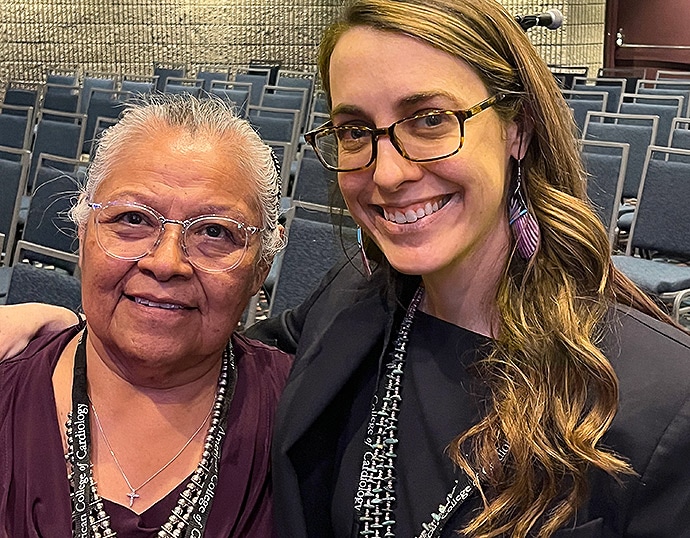 Ada Tennison, CAN, coordinator and primary outreach practitioner for the program (left), with Dr Lauren Eberly
Ada Tennison, CAN, coordinator and primary outreach practitioner for the program (left), with Dr Lauren Eberly"There was significant and rapid increase in the uptake of GDMT as patients crossed over from usual care to the intervention," Eberly said in presenting the trial results at the American College of Cardiology meeting here. "When we looked at our primary outcome of addition of GDMT classes at 30 days, the primary outcome occurred significantly more frequently in the intervention arm than the usual care arm, 66% vs 13%, which was highly statistically significant."
The trial results were also published online on April 7 in JAMA Internal Medicine.
Targeting a 'Binary Outcome'
"For our study, what we really wanted to look at was a binary outcome — so, a yes or no. Do they have an increase in addition of GDMT of those recommended classes to their regimen?" Eberly told theheart.org | Medscape Cardiology.
The goal was to determine how many patients added a GDMT class of treatment at 30 days or an increase in dose among the four cornerstones of GDMT first-line treatment of beta-blockers, renin-angiotensin-aldosterone system inhibitors (RAAS) — including angiotensin-converting enzyme inhibitors, angiotensin receptor blockers, or angiotensin receptor-neprilysin inhibitors — mineralocorticoid receptor antagonists (MRAs), and sodium-glucose cotransporter-2 inhibitors (SGLT2is).
Eberly noted the telemedicine initiative was designed after garnering input from the Navajo Nation and tribal elders.
The patient population was divided into five cohorts, one of which started out in the telemedicine program, the remaining four crossed over from usual care to the intervention at 30-day intervals until all had crossed over after 4 months.
In only one GDMT drug class, beta-blockers, were the results not statistically significant, as 3.5% of the intervention added the class at 30 days vs 2.1% of the usual care arm (P = .24).
For all other classes, the telemedicine results were dramatic, Eberly said: 39.7% vs 6.3% for RAAS drugs; 30.7% vs 0.9 for MRAs; and 37.2% vs 4.6% for SGLT2is (P < .001 for all).
"The number of patients needed to receive this intervention to result in the addition of a GDMT class was two, so it was quite low," Eberly told the attendees.
"In addition to the significantly high rates of addition of GDMT in the intervention arm, there were also higher rates of increase in doses at 79% vs 23%, and while this was exploratory and a secondary outcome, there were lower heart failure hospitalizations in the intervention arm, and there were very few adverse events in total with no significant differences between the arms," she added. The rate of heart failure hospitalizations was 1.3% in the telemedicine arm vs 4.3% for usual care (P < .024).
After the presentation, Eberly explained the challenges of closely monitoring HFrEF patients in the Navajo Nation.
"We're still facing enduring impacts of settler colonialism, and I think that's important to note that that affects real life and everyday life," she said. "One in three people have no electricity or no running water in the Navajo Nation, so cardiology specialty care can be 2 hours away. That's gas money, unpaved roads."
Sometimes, the roads are virtually impassable, she said, and for those who can travel, food and a hotel stay add costs. "Sometimes those barriers are completely prohibitive," she said.
Program Expanding
The Indian Health Service has since adopted this GDMT telemedicine initiative at its Gallup and Tohatchi, New Mexico, centers, with plans to expand it to a third center in Arizona, Eberly said, and is exploring ways to target other disease states, again based on input from the tribal community and elders.
That type of input is vital for designing health outreach programs in the Native American population, said Jason Deen, MD, a cardiologist at Seattle Children's Hospital and the University of Washington, Seattle, Washington.
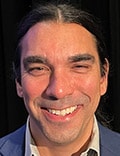 Jason Deen, MD
Jason Deen, MD"One of the major successes Dr Eberly and her team had was to really focus on initial community environments," Deen said. "They approached these communities about their agenda. When you heard her say that initially she wasn't interested in heart failure medical management, but that's what came from the community."
That type of grassroots planning is critical for addressing health disparities in indigenous peoples, Deen noted. "Really, that's the only way that you can know they'll trust the program and that it is sustainable in some of these communities," he said. "There are systemic barriers to health," he added, and Eberley is "working on very reasonable interventions."
The initiative also got "back to the basics," he said. "This study was successful because they had a Navajo speaker, someone from the community, reach out to these people and talk to them," Deen said. "It's really basic communications."
He added, "We need more research like Eberly's and her team's that understands that we can revert to some of the basics. We have all these fancy interventions, but we can really revert to some of the basics that can obviate some of the barriers."
Eberly and Deen had no relevant disclosures.
Richard Mark Kirkner is a medical journalist based in the Philadelphia area and a member of the Association of Healthcare Journalists.

.webp) 1 week ago
13
1 week ago
13





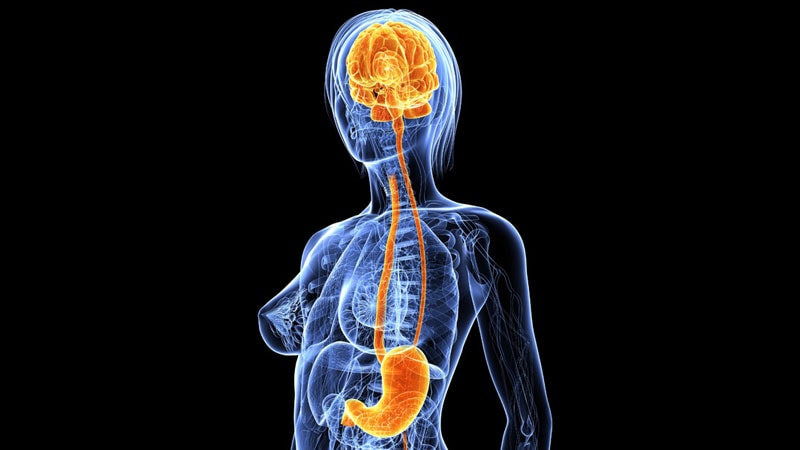




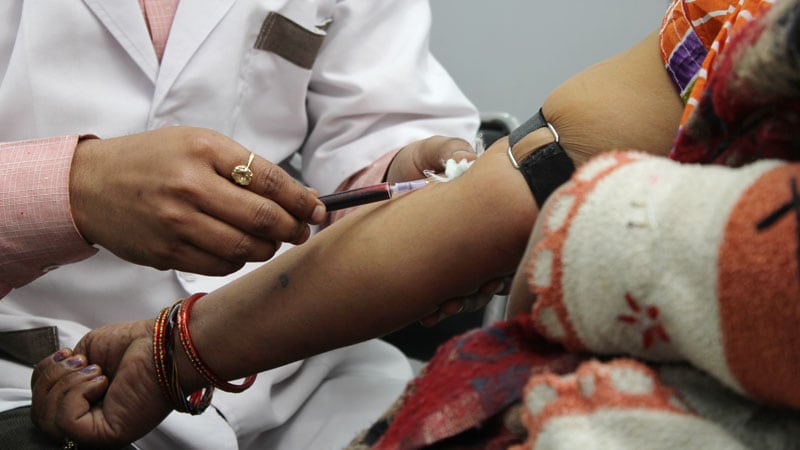




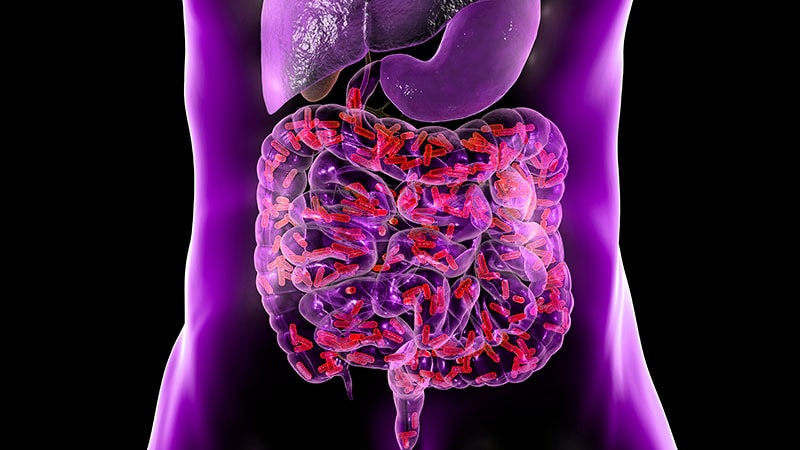









 English (US)
English (US)